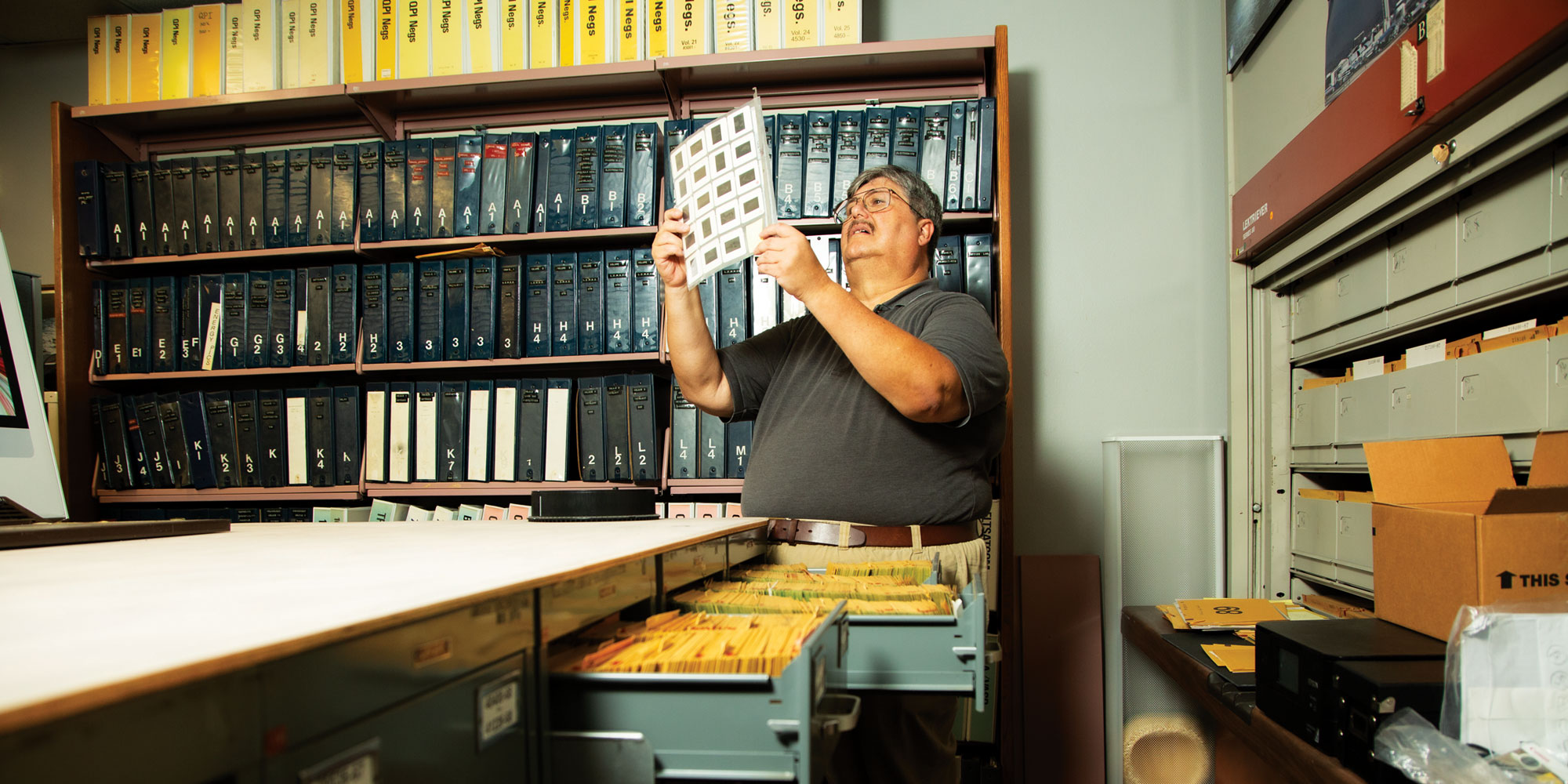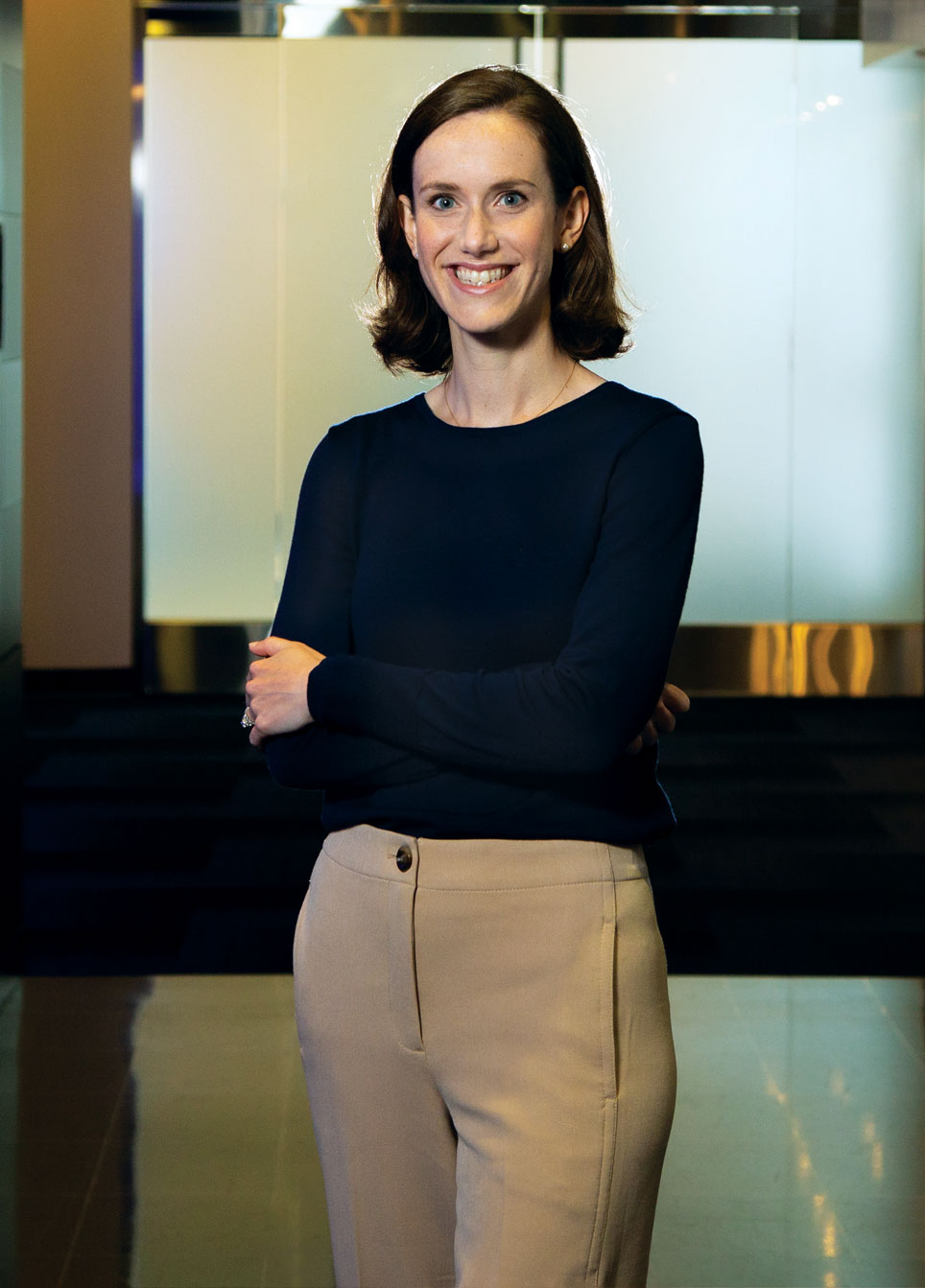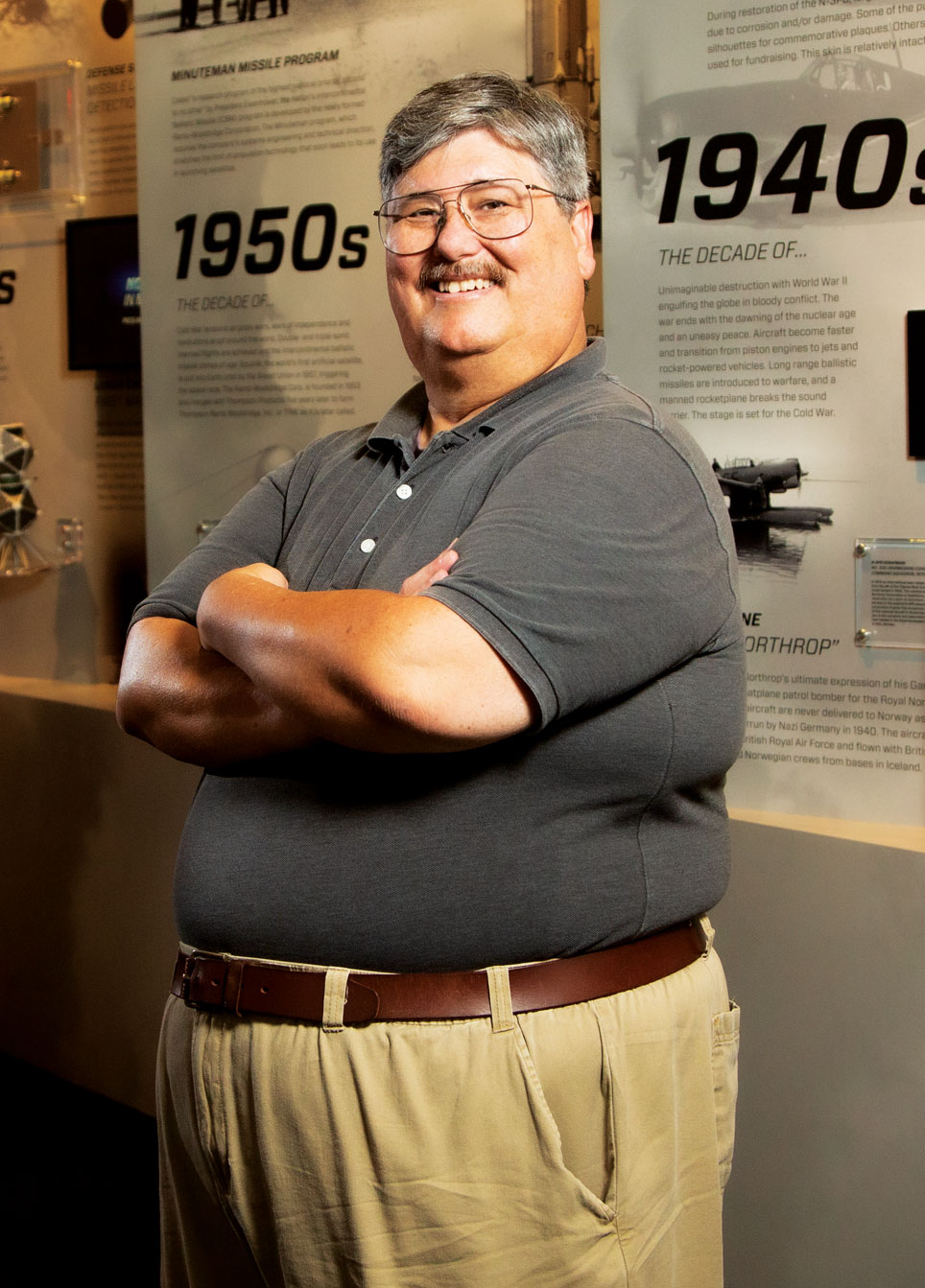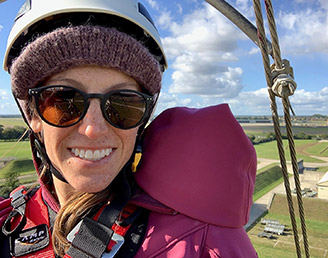Kevin has always found time for the two greatest loves of his life: music and engineering.
Curating a Lasting Legacy

By Lauren Mittleman and Michelle A. Monroe
From the Spirit of St. Louis in the 1920s, to the Apollo Lunar Module in the 1960s, to today’s James Webb Space Telescope, Northrop Grumman has a rich history of defining possible. Today, there are many Northrop Grumman employees — from historians to museum curators and everything in between — dedicated to preserving this incredible company legacy and using it to help shape the future.

Bringing our Work to Life: Katie Moyer, Curator
Katie Moyer, lead curator of Northrop Grumman’s exhibit in Redondo Beach, California — a museum space that displays the company’s rich history from its beginnings to its newest, most advanced endeavors — works every day to bring the company’s history alive through artifacts and employee interviews. Located in the lobby of the E2 building at the company’s Space Park campus, the exhibit includes displays of model airplanes and satellites, interactive videos and screens and actual artifacts from historic programs, such as the wooden model used in wind tunnel testing in the development of the N-1M aircraft and the original skin from the N-3PB floatplane.
“I develop relationships with the people who have been at Space Park for decades, piecing a story together from their firsthand accounts, which I then use to create content in the exhibit,” said Katie, who came to the company after a decade at the Smithsonian Air and Space Museum in Washington, D.C. “It's storytelling — picking the right artifacts that articulate the story I’ve been told and making sure that comes across.”
On an average day, Katie interacts with exhibit visitors including employees, customers and even local schoolchildren interested in STEM.
“Northrop Grumman is actively discovering new things every single day, but we're also communicating about programs that have happened in the past and their impact on our society and culture,” Katie said.
Preserving Our History: Pamela Hansen, Archivist
A fourth-generation Northrop Grumman employee based in Bethpage, New York, Pamela Hansen is the keeper of paper and digital historical records at the Grumman Archives. Most of what she works with is from 1929 to 1994, but she answers historical requests on anything relating to the company.
As an archivist librarian at Northrop Grumman, she helps her colleagues — often Northrop Grumman engineers, lawyers and communicators — by conducting historical research to answer their questions.
“I try to understand what people need,” Pamela said. “I'm really good at research. I like to say, ‘If we have it, I'll find it.’”
Through her role, Pamela connects engineers with history on legacy programs — such as the Apollo Lunar Module, F-14 Tomcat supersonic fighter aircraft and Vertical Take Off and Landing reports and drawings — so they understand why something was done previously, helping them create a better product. One of Pamela's favorite requests was providing lunar module images for the Apollo 50th Anniversary Dinner at the Cradle of Aviation Museum in Uniondale, New York, and contributing to Apollo 50th anniversary celebrations in the United States and Japan.
“There is value in keeping our history and in keeping it alive,” she said. “And it's alive if it's being used.”
Bringing Fresh Perspectives: Maya Bershtel, Jane Talbot and Teria Curry, Librarians
Maya Bershtel, Jane Talbot and Teria Curry manage Northrop Grumman’s virtual libraries, enabling 24/7 access to a plethora of research material, including technical, engineering and business research content, conference proceedings, eBooks, articles, journals and specifications and standards.
“Overall, we ensure that we have the right materials for the needs of our users,” Maya said, noting that each librarian focuses on a different sector of the company.
Although none of the librarians have aerospace backgrounds — Maya, Jane and Teria studied classics, anthropology and history, respectively — they’ve flourished in the company’s welcoming culture and brought fresh perspectives.
“You need a variety of people who have different experiences or ways of approaching a solution. Each of us has a different way of seeing how we're going to resolve a research request based on our experience and the tools we know,” Teria said.

Sharing Our Legacy: Tony Chong, Historian
After 30 years in Northrop Grumman’s display model airplane shop, Tony Chong came out of retirement in 2014 when he received a call from Northrop Grumman requesting that he serve as a part-time aerospace historian, conducting research for internal and external customers.
“The great joy I've had in a 40-year aerospace career is because I really liked the industry — there's always something new to learn,” Tony said of his decision to come back. “It is critically important that we maintain the company’s legacy so engineers, historians and any person who is interested in Northrop Grumman knows what this company has been able to accomplish.”
Tony looks for anything of historical value that could help the company in future applications, such as research on legacy programs that could inspire future programs. He also handles requests from people outside of Northrop Grumman, such as authors and producers, who want information on our history and founders. He uses photo archives and other documentation to find answers to their questions.
“It's very important to me that people understand that history is not dull or boring,” Tony said. “It's a vibrant part of who we are.”
Recommended Stories


